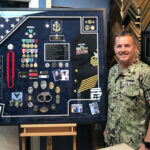I. Understanding MDF and Its Upcycling Potential
II. Creative Ideas for Upcycling Your MDF Table
III. Step-by-Step Guide to Transform Your MDF Table
Understanding MDF and Its Upcycling Potential
Hey there! So, let’s dive into a topic that’s not only interesting but also super relevant in today’s eco-conscious world: Medium Density Fiberboard, or MDF for short. You might be wondering, “What exactly is MDF?” Well, let’s break it down.
What is MDF?
MDF is an engineered wood product made from wood fibers, wax, and resin. These ingredients are combined under heat and pressure to create a dense, sturdy board. Unlike solid wood, MDF has a smooth surface, which makes it a popular choice for furniture, cabinetry, and decorative projects. And here’s a fun fact: because it’s made up of smaller wood fibers, MDF doesn’t warp as much as natural wood, making it a reliable option for various applications.
Why Upcycle MDF?
You might be asking yourself, “Why should I even consider upcycling MDF?” Well, there are some pretty compelling reasons:
- Eco-Friendliness: Upcycling helps reduce waste and gives new life to materials that might otherwise end up in a landfill. By transforming your old MDF furniture into something fresh and exciting, you’re doing your part for the planet!
- Cost-Effective: Instead of splurging on new furniture, why not breathe new life into what you already have? Upcycling can be a budget-friendly way to update your space.
- Creativity Unleashed: Upcycling MDF allows you to tap into your creative side. You can experiment with colors, textures, and designs without the pressure of making a perfect piece. It’s a fantastic way to personalize your home!
The Versatility of MDF
One of the best things about MDF is its versatility. You can easily cut, shape, and paint MDF to achieve your desired look. Whether you want to transform a simple table into a statement piece or create functional storage solutions, the possibilities are nearly endless!
Plus, if you’re not into heavy-duty woodworking, you’ll be pleased to know that MDF is relatively easy to work with. You don’t need to be a professional craftsman to make something beautiful; a little creativity and some basic tools can go a long way!
Common MDF Products to Upcycle
Now that you’re excited about the potential of MDF, let’s look at some common products you might consider upcycling:
- Old tables
- Bookshelves
- Cabinets
- Picture frames
- Chests or storage boxes
Each of these items has its own unique character and can be transformed into something that fits your style perfectly. From a chic coffee table to a quirky bookshelf, you can truly make each piece your own!
In Conclusion
Understanding MDF and its upcycling potential opens up a world of creativity and sustainability that you won’t want to miss out on. So, gather your ideas and prepare to embark on an upcycling adventure that’s as fun as it is rewarding!
Creative Ideas for Upcycling Your MDF Table
So, you’ve got an MDF table that’s seen better days? Don’t fret! MDF, or medium-density fiberboard, is a fantastic material for upcycling because it’s versatile, easy to work with, and can be transformed into something spectacular with just a bit of creativity. Whether it’s a small side table or a larger dining table, the possibilities are endless. Let’s dive into some fun and creative ideas to breathe new life into your MDF table!
1. Paint It Pretty
One of the simplest yet most effective ways to spruce up your MDF table is with a fresh coat of paint. Here’s how to make it pop:
- Choose Your Color: Go bold with a vibrant hue or keep it classy with neutral tones. The color you select can set the mood of the entire room!
- Prep the Surface: Sand lightly to create a smooth surface. Wipe it down to remove any dust.
- Use Primer: Applying a primer will help the paint adhere better and improve the finish.
- Finish with a Sealant: Once dry, consider a clear sealant for durability.
2. Decoupage Delight
If you’re feeling particularly crafty, decoupage is a fun technique to customize your table. Here’s a quick breakdown:
- Select Your Paper: Use decorative paper, fabric, or even old book pages for a vintage vibe.
- Cut Your Shapes: Get creative by cutting various shapes or images through paper or fabric.
- Apply the Glue: Use a decoupage medium to adhere your shapes onto the table’s surface.
- Seal It Up: Finish with a few layers of decoupage medium to protect your design.
This technique not only personalizes your table but also adds a unique texture that’s sure to impress!
3. Add a New Tabletop
If the original MDF surface isn’t cutting it anymore, consider swapping it out altogether. Here’s a chic idea:
- Wood Veneer: Apply a thin layer of wood veneer for a rustic feel. You can stain it for a richer color!
- Glass Top: For a modern look, place a glass top over the MDF. This adds elegance and makes cleaning a breeze.
- Tile It: If you’re feeling adventurous, try tiling the top with colorful tiles for a Mediterranean flair.
4. Turn It into a Multi-Functional Piece
Why limit your MDF table to one use? Transform it into something multifunctional:
- Storage Solution: Add some cute baskets or drawers underneath to create hidden storage.
- Flip It: Flip your table to create a unique standing desk or game table!
- Change the Legs: Swap out the legs for stylish hairpin legs or even reclaimed wood for a modern twist.
Upcycling your MDF table can be a rewarding project that not only enhances your home decor but also gives a new purpose to furniture that might otherwise go to waste. So gather your supplies, unleash your creativity, and let your imagination run wild!
Step-by-Step Guide to Transform Your MDF Table
Ready to breathe new life into that old MDF table sitting in your home? Whether it’s looking a bit tired or you just want to give it a fresh new look, upcycling can be a fun and fulfilling project! Let’s get started with a simple step-by-step guide that will transform your table into a stunning centerpiece.
Gather Your Supplies
First things first, you’ll need to gather some supplies. Here’s a handy list of what you might need:
- Sandpaper (various grits)
- Primer (for better paint adhesion)
- Paint (choose your favorite color or even a stylish chalk paint)
- Sealer (to protect your finish)
- Brushes or rollers (for painting)
- Fabric or contact paper (if you’re going for a new surface)
- Optional: Stencils or decals (for added flair)
Step 1: Prep Your Workspace
Before you start working, it’s essential to set up a comfortable, well-ventilated workspace. Lay down a drop cloth to protect your floors and gather all your supplies within easy reach. Remember, a tidy workspace keeps you focused and makes for a smoother project!
Step 2: Sand the Surface
Now onto the fun part! Start sanding your MDF table with medium-grit sandpaper (around 120 grit) to smooth out any imperfections. Don’t forget to wear a mask to avoid inhaling dust. Once you’ve done the rough sanding, switch to fine-grit sandpaper (around 220 grit) for a silky finish. Be sure to wipe it down with a damp cloth afterward to remove any dust.
Step 3: Apply Primer
Applying primer is a crucial step that helps your paint adhere better and enhances the overall finish. Use a brush or roller to coat the table evenly. Let it dry completely as per the manufacturer’s instructions—this is usually a quick process!
Step 4: Get Creative with Paint
Here comes the part where you can truly express yourself! Choose a paint color that resonates with your style. If you’re feeling adventurous, consider using multiple colors or techniques like ombre or distressing. Apply your paint in thin, even layers and allow it to dry between coats. Depending on the color, you might need two or three coats for full coverage.
Step 5: Finish with a Sealer
To give your table a finished look and protect it from wear and tear, apply a clear sealer. This step is important, especially if your table will see a lot of use. Again, follow the manufacturer’s instructions and let it dry completely.
Step 6: Optional Additions
If you want to take your upcycle a step further, consider adding stencils or decals for a personalized touch. You could also line the surface with beautiful fabric or contact paper for a unique design. The possibilities are endless!
Step 7: Enjoy Your New Table!
Once everything is dry and set, place your newly transformed MDF table back in your desired spot. Step back, admire your handiwork, and enjoy the satisfaction of having created something beautiful. You did it!
So there you have it! With just a bit of creativity and elbow grease, you can turn that old MDF table into a stylish statement piece. Happy upcycling!





Comments